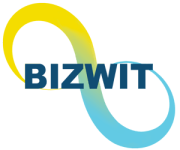Global mHealth Apps Market is valued at approximately USD 33.17 billion in 2023 and is anticipated to grow with a healthy growth rate of more than 11.7% over the forecast period 2024-2032. mHealth, or mobile health, involves sharing and monitoring health information via mobile technology, such as health-tracking apps and wearables. This technology leverages mobile wireless technology to deliver care and monitor symptoms, allowing medical professionals to make diagnoses more efficiently and with minimal errors. mHealth is gaining significant traction among customers as tech giants, such as Google and Apple, continue to provide various applications on their app stores. The rising consumer demand for accurate health monitoring solutions is prompting pharmaceutical and mobile health app companies to develop mHealth apps. Notable examples include Fitbit, Apple Heart Study, and BlueStar. Healthcare providers can reduce appointment costs by utilizing mHealth apps, which also lower the risk of patient rehabilitation.
The rapid developments in the telecommunication sector and mobile phone technology are key trends driving product demand. The introduction of technologies such as 4G LTE and 5G networks provides significant opportunities for the mHealth industry to flourish, particularly in developing countries. For instance, in October 2022, the next-generation 5G network service was introduced in India, enhancing network capabilities and boosting product demand. Moreover, partnerships between mHealth app developers and telecommunication providers are expected to bolster the healthcare ecosystem and promote the use of mHealth apps.
One of the crucial drivers of this market is the rising prevalence of chronic diseases, such as respiratory ailments, cardiac conditions, diabetes, and hypertension, which necessitate continuous monitoring or regular checkups. These apps offer remote patient monitoring features and frequent medication reminders, helping patients manage their health routines and reducing the need for physical visits to specialists. The emergence of new technology and the increasing demand for more effective mHealth apps present significant market opportunities.
Despite the huge potential of mobile health apps, technological and infrastructural barriers in developing countries pose significant challenges to market expansion. The deployment of health apps requires the latest telecommunication devices, high-speed internet, and large storage capacity, resources that are still lacking in many developing countries.
The key regions considered for the Global mHealth Apps Market study include Asia Pacific, North America, Europe, Latin America, and Rest of the World. North America is a dominating region in the Global mHealth Apps Market in terms of revenue. The market growth in the region is being attributed to factors including the widespread adoption of advanced technologies, a high level of smartphone penetration, and the presence of major market players. The region’s well-established healthcare infrastructure and significant investments in digital health initiatives contribute to its leadership in the market. Whereas, the market in Asia Pacific is anticipated to grow at the fastest rate over the forecast period fueled by the increasing prevalence of chronic diseases, a rapidly expanding middle class, and rising healthcare costs, which prompt the need for cost-effective healthcare solutions.
Major market player included in this report are:
Livongo Health (Teladoc) (U.S.)
Boston Scientific Corporation (U.S.)
Omron Healthcare, Inc. (Japan)
Abbott (U.S.)
Jawbone Health Hub, Inc. (U.S.)
Fitbit Inc. (U.S.)
Apple Inc. (U.S.)
Omada Health, Inc. (U.S.)
Google Inc.
AirStrip Technologies, Inc.
Samsung Electronics Co. Ltd.
Veradigm LLC (Allscripts Healthcare Solutions)
Qualcomm Technologies, Inc.
Novartis AG
Pfizer Inc.
The detailed segments and sub-segment of the market are explained below:
By App Type:
Disease & Treatment Management
Wellness Management
Others
By Application:
Monitoring Services
Fitness Solutions
Diagnostic Services
Treatment Services
Others
By Market Place:
Google Play Store
Apple App Store
Others
By Region:
North America
U.S.
Canada
Europe
UK
Germany
France
Spain
Italy
ROE
Asia Pacific
China
India
Japan
Australia
South Korea
RoAPAC
Latin America
Brazil
Mexico
Rest of Latin America
Middle East & Africa
Saudi Arabia
South Africa
RoMEA
Years considered for the study are as follows:
Historical year – 2022
Base year – 2023
Forecast period – 2024 to 2032
Key Takeaways:
Market Estimates & Forecast for 10 years from 2022 to 2032.
Annualized revenues and regional level analysis for each market segment.
Detailed analysis of geographical landscape with Country level analysis of major regions.
Competitive landscape with information on major players in the market.
Analysis of key business strategies and recommendations on future market approach.
Analysis of competitive structure of the market.
Demand side and supply side analysis of the market.



